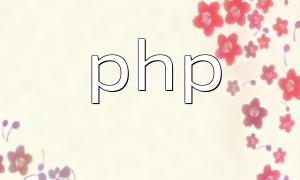In modern web development, clear and professional font rendering is crucial to user experience. Freetype is an efficient font engine that significantly improves the appearance of text in graphical environments. This article will walk you through installing and configuring Freetype with PHP on macOS.
macOS users can easily install Freetype using Homebrew. If Homebrew is not yet installed, please visit its official website for instructions. Once installed, open Terminal and run the following command:
brew install freetypeAfter installation, use the following command to confirm Freetype has been installed:
brew list freetypeIf a list of files appears, it indicates that Freetype was installed successfully.
To check whether PHP has Freetype support enabled, run this command in the terminal:
php -m | grep freetypeIf nothing is returned, it means PHP currently does not support Freetype.
If you need to reinstall PHP, use this command:
brew install phpOlder Homebrew versions may support the following command to explicitly include Freetype support (note that recent versions may not support this flag):
brew install php --with-freetypeOnce installed, edit your PHP configuration file (php.ini) to enable the Freetype extension. The typical path is:
/usr/local/etc/php/7.x/php.iniLocate and uncomment the following line:
extension=freetype.soAfter making changes, restart the PHP service to apply them:
brew services restart phpCreate a simple PHP script to test whether Freetype is enabled. Save the following code as test_freetype.php:
if (function_exists('imagettftext')) {
echo 'Freetype support is enabled!';
} else {
echo 'Freetype support is not enabled!';
}
?>Run the script in your browser to check the result.
Following the steps outlined in this guide, you can successfully set up Freetype with PHP on macOS. Whether you're rendering text in images or working with dynamic fonts, Freetype is a reliable tool that significantly enhances font quality. We hope this guide proves useful for your development workflow.









